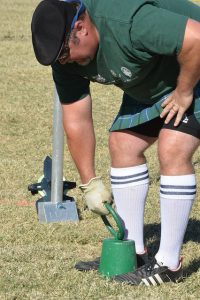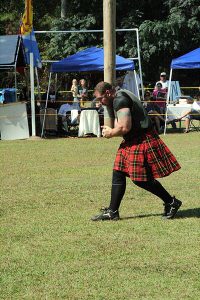
The cultural heritage on our planet is incredibly diverse; countless peoples with countless communities on every corner of the world have created their own sets of customs that set them apart from other people. There is so much that we can learn from one another, be it in terms of ceremonial or practical knowledge. There are even numerous sports that originated as mere ceremonial acts, but today they are practiced just like any other. Regardless of their origin, sports have become an integral part of our daily lives, not only as a way of keeping fit but also as a way of entertaining ourselves – by watching our favorite teams and betting online with the betway bonus. Some games, however, do not fit this description as well as others. Some games, like the famous Highland Games, have emerged as a way to demonstrate one’s physical prowess over other people. However, even though most people have at least heard of these games, not many people actually know their history and origin story.
What are the Highland Games?
The Highland Games, despite sometimes being portrayed as an old-timey strongman competition, are, in their essence, an event that promotes and celebrates the Scottish culture. As such, they are not limited to Scotland only but are present in any country with a large population of Scottish people. They include a variety of events, but the most famous one and the one that has become synonymous with the Games themselves is the caber toss. The Games are held every August, and almost four thousand competitors join every year, with almost thirty-five thousand people coming only to watch the festivities. Aside from the caber toss, there are other competitions, like the competitions in bagpiping, drumming, dancing, and numerous other ways of competing and celebrating the Scottish heritage.
The caber toss

Even though you may not know what the name refers to, you are most certainly familiar with the picture of large, burly men throwing huge logs to see who can do it the farthest. The log, called the caber, can be up to 6 meters in length, and it can weigh almost 70 kilos. It is unclear how this became a national competition, but the origin of this event is most likely lumberjacks who needed to quickly transport the lumber that they had cut; the narrow mountain streams were the best way to do it quickly and having a bit of fun competition with their friends made for an excellent motive. Fast forward to today, the caber toss is an incredibly popular event, both in the British Isles and in North America.
Of course, simply picking up the log and tossing it is not nearly enough – the caber needs to flip lengthwise, and ideally, it should land completely straight, in a 12-o-clock position relative to the tosser.
There is a lot more strength and skill involved than you initially may think; the caber needs to first be balanced, then the tosser needs to make a small run to gain momentum, and then to expel the caber in the best possible way so as to flip it perfectly. All of this needs to be done in such a way that the log does not sway to either side, which requires even more strength. The scoring system is based on the clock, and it follows the numbers; the most points are gained if the caber falls away from the tosser in a perfect 12-o-clock position, that is, facing ideally away from him. If the caber reaches the upright position but falls to either side, the points decrease, and should the caber reach the vertical position and start falling back towards the competitor, he receives the least amount of points.

